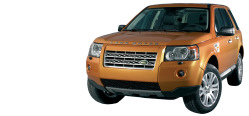Lightwater
Member Since: 21 Aug 2014
Location: Sydney Northern Beaches
Posts: 4953

 
|
I mostly used foam & the thicker the better, basically filling spaces totally.
I live in Sydney at the waterfront, it is a humid environment. In the home it can feel really humid, especially December to March. & we get enough mould, even being careful with cooking, squeegeeing shower & ventilation. Also have air conditioning, by try not to overdo it with the AC, because when you go outside you suffer even more coming from a too controlled environment. Plus the running costs is another issue.
I did use some open cell foam on the inside of the metal garage door, also thick open cell foam above the garage door. None of it has ever felt damp or the slightest bit humid.
A sponge by nature will wick up water, but it will evaporate.
The only two places in the car for water to pool are the foot well. Even there it will be towards the rear as the floor pan slopes that way. & The spare wheel well.
So how is a sponge going to wick up water anywhere around the car, unless you have a leak, quicker than it can evaporate.
The old cotton felt they used in cars, that really would wick up water. I had it in my Peugeot 504.
You do get more condensation in the back of the car due to the cooling effect of low pressure behind the car. But insulating the car with acoustic foam or batts will provide thermal insulation. It's why there is a demister on the rear window of cars.
When we were sleeping in the car before the acoustic insulation, there was so much condensation, our bedding was wet. The acoustic foam stopped the condensation on the trim panels, & the sun screens in the windows stopped most of the condensation there.
The Freelander has never fogged up inside due to moisture. But I had that a few times on the old Peugeot due to leaks & everything being damp.
Tyre noise:
All Terrain tyres are noisier, & all tyres get noisier as they get older. At least I am not running Mud tyres as so many cars in Sydney have!
Putting foam in road tyres would be ok. But off-road tyres where you are airing up & down all the time, can be multiple times a day.
Even with the best moisture management like I have, you do keep adding water to the inside of the tyre. It is amazing how wet they get inside.
When you compress air 10 x you end up with 10 x the water in the tyre. So if you are regularly airing up tyres you want the compressed air to be as dry as possible to start with. Procrastination, mankind's greatest labour saving device!
Acoustic insulation ARB TPMS 3xARB air compressors After cooler Air tank On-board OCD pressure air/water cleaning Additional 50L fuel Carpet in doors ABE 2x1kg Waeco 28L modified fridge Battery 4x26ah Solar 120w Victron MPPT 100/20 DC-DC 18amps 175amp jumper plug Awning 6x255/60R18
|










![]()


